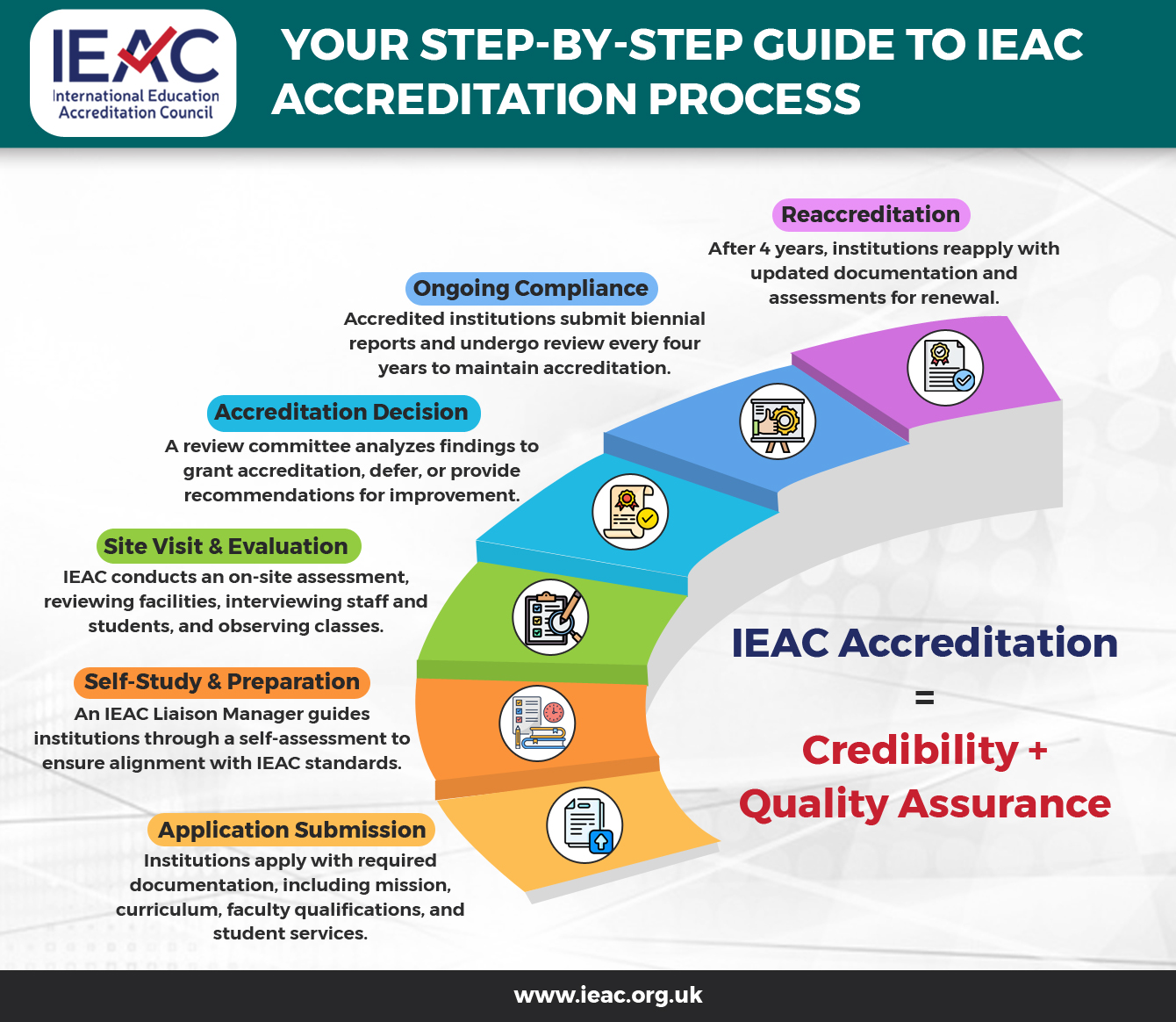- Home
- About IEAC
- Accreditation
- University Accreditation
- College Accreditation
- Online Institution Accreditation
- School Accreditation
- University Recruitment Agency Accreditation
- Programmatic Accreditation
- Teacher/ Lecturer Accreditation
- Religious Institutes Accreditation
- Affiliate Accreditation
- Research Accreditation Candidacy Accreditation
- IEAC Membership
- Institutions Accredited
- Accreditation Process
- Contact Us Webinar Apply Now
Blog
5 Faculty Workload Strategies That Strengthen Quality Assurance in Higher Education
Lorem ipsum dolor sit amet, consectetur adipiscing elit, sed do eiusmod tempor incididunt ut labore et dolore magna aliqua. Quis ipsum suspendisse ultrices gravida. Risus commodo viverra maecenas accumsan lacus vel facilisis.

5 Faculty Workload Strategies That Strengthen Quality Assurance in Higher Education
Every semester, faculty members step into classrooms with a vision: to inspire and guide learners. Yet behind the lectures and mentoring, there’s a constant struggle, managing heavy teaching loads, back-to-back schedules, research expectations, and student support.
When this balance tips, it often leads to stress, fatigue, and disengagement. Students lose out on quality learning experiences, research takes a back seat, and institutions risk falling short of the standards of quality and effectiveness they aim to uphold.
For institutions, especially those preparing for the accreditation process, effective workload management is more than operational efficiency. It demonstrates a clear commitment to quality assurance and adherence to recognized quality benchmarks.
The solution lies in smart systems and thoughtful planning.
In this blog post, we will explore five ways institutions can ease the burden on faculty while strengthening their reputation for academic quality.
From lectures to mentoring, faculty wear many hats. Here are five ways institutions can make workloads more realistic and sustainable.
1. Automated Timetabling
Manual scheduling often creates overlaps, errors, and wasted faculty hours. An automated timetabling system changes that by:
- Conflict-free scheduling: Courses across multiple departments can be coordinated to avoid clashes, ensuring smoother delivery.
- Flexibility for emergencies: Faculty can easily swap or reschedule sessions without disrupting the broader academic calendar.
- Structured planning: Assigning student groups and allocating teaching hours becomes consistent and transparent.
This system not only reduces administrative headaches but also supports faculty well-being. For institutions, it showcases structured academic planning, a critical element when demonstrating quality assurance during reviews and audits.

2. Smarter Classroom Bookings
Inefficient use of classrooms is a hidden stressor. Faculty waste time finding available spaces or adjusting plans due to double-bookings. Smarter room booking systems help by:
- Optimizing utilization: Every classroom is tracked, so no resource goes underused or overbooked.
- Flexibility in arrangements: Large lectures can combine rooms, while smaller seminars can downsize for intimacy.
Transparency in scheduling: Automatic confirmations prevent confusion for both faculty and students.
By proving effective resource management, institutions highlight their ability to meet quality benchmarks related to infrastructure and academic delivery.
3. Easy Access to Schedules
Faculty workloads extend beyond teaching, mentoring, committee work, and research also demand attention. A central, accessible scheduling system provides:
- On-demand clarity: Faculty can filter timetables by course, faculty name, or room.
- Continuity of planning: Past schedules help in analyzing patterns, while future schedules ensure proactive preparation.
- Mobile accessibility: Faculty and students can check real-time updates on the go.
This reduces stress, saves time, and builds predictability into daily operations. During the accreditation process, such systems demonstrate the institution’s commitment to well-organized academic delivery.
4. Instant Notifications
Even the best schedules face sudden changes, canceled classes, substituted faculty, or shifted rooms. What matters is communication. Instant notification systems allow:
- Real-time updates: Automated alerts via email, SMS, or push notifications keep everyone informed.
- Reduced disruption: Students and faculty can immediately adapt to changes, preventing wasted time.
- Stronger trust: Consistent communication fosters confidence in institutional processes.
For accrediting bodies, this level of responsiveness shows that the institution prioritizes operational efficiency and consistent standards of quality and effectiveness.
5. Custom Reports for Growth
Workload management isn’t just about solving today’s problems; it’s about planning for tomorrow. Reporting tools help institutions by:
- Tracking workloads: Administrators can see which faculty members are overloaded and rebalance assignments.
- Analyzing trends: Comparing schedules semester to semester reveals patterns that help refine academic planning.
- Evidence for reviews: Reports provide concrete data to demonstrate efficiency and fairness in faculty workload management.
Such insights strengthen a culture of continuous improvement, a core expectation of quality assurance frameworks and a powerful asset during the accreditation process.
Final Thoughts
Faculty members are the backbone of academic quality. Supporting them with smarter scheduling, resource management, and transparent systems not only eases their stress but also enriches the learning experience for students.
For institutions, these practices go beyond efficiency, they reflect a commitment to quality benchmarks and to sustaining standards of quality and effectiveness. More importantly, they serve as tangible proof of institutional readiness and resilience in the accreditation process.
Frequently Asked Questions (FAQ)
1. Why is faculty workload management important in higher education?
Effective workload management helps faculty balance teaching, research, and mentoring responsibilities. It reduces stress, prevents burnout, and ensures students receive quality instruction. For institutions, it demonstrates strong planning and adherence to standards of quality and effectiveness.
2. How does faculty workload relate to the accreditation process?
During the accreditation process, institutions must show that faculty members are not overburdened and that teaching loads are managed fairly. This reflects the institution’s commitment to quality assurance and continuous improvement.
3. What role does technology play in managing teaching schedules?
Technology simplifies scheduling by automating timetables, managing room bookings, sending instant notifications, and generating custom reports. These tools not only save time but also strengthen institutional quality benchmarks by ensuring efficiency and transparency.
4. Can automated systems really reduce faculty stress?
Yes. Automated systems remove repetitive administrative tasks, minimize scheduling conflicts, and provide easy access to information. This allows faculty to focus more on teaching and research, ultimately improving job satisfaction and student outcomes.
5. How do custom reports support quality assurance?
Custom reports track workload distribution, resource use, and scheduling changes over time. They give administrators data-driven insights for better decision-making and provide evidence for audits and evaluations linked to quality assurance frameworks.



.jpg)


